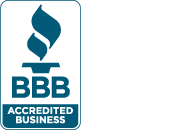It’s becoming clearer by the day that these next few months could go south for small businesses, so now is the time to jump into action with a nonprofit and small business action plan. The government is offering support slowly but surely, but it’s important to acknowledge and understand the steps that need to be taken in the meantime.
Good businesses have endured and even been created during times of crisis, so keep your chin up, prioritize the health and wellness of your staff, clients and donors, and take advantage of the support systems available to you and your business.
Reduce Expenses
A good economy in recent years has spoiled us, which means that many of us have allowed our debts and expenses to accumulate. This is a great opportunity to go through your various bank and credit card statements and reduce, cancel or rearrange services.
Review each item on your trusty spreadsheet and see what you can do to lower or eliminate costs. Be ahead of the game as well by calling vendors and asking if they are offering discounts or delays in billing.
Chances are companies will be willing to negotiate with you during our current crisis, but not necessarily further down the line, so do yourself a favor and get on it ASAP. Determine your comfortable payment ranges to vendors and if you have to, frame it like: “I can pay you X amount in X days, or I can go belly-up and not pay anything – which option sounds better to you?”.
Unless your business relies on a service or industry that is essentially shutdown, be cautious about cutting back advertising or marketing. Carefully monitor your accounts and make sure everything running is still relevant, but don’t fail to get the word out at all.
Be very cautious about cutting salaries or reducing hours or benefits until you have all the information about what the Small Business Administration or Federal Government may provide you. Cutting staff, salary, hours or benefits will likely have a demoralizing effect as a result and you want to avoid doing any combination of those more than once if required. At the very least keep communication about the state of things clear with your staff. You never know, some might willingly volunteer for reduced hours or even opt to furlough to spend more time in their home. It would be recommended to try other options before cutting the staff.
Boost Cash Flow and Sales
If promotions, sales or specials were ever on the table, now is the best time to put them into play. Some cash flow is better than no cash flow, after all. You could offer a special or a sale and promote it after encouraging your customers.
Gift certificates are also a great way to promote your business. Many people are determined to support their favorite small businesses during this time, which presents a great opportunity for cash flow.
If you have outstanding receivables or large donations now is the time follow up, especially from customers or donors whose businesses are not suffering from the impacts of COVID-19.
Break-Even Analysis
Constantly be aware of your operating budget on a monthly—or in some cases, weekly basis. Go back to basics with a spreadsheet to list out your Expenses & Income.
Identify your fixed expenses that you can’t quickly alter like salaries, software, insurance, rent, and utilities. Next add your income from all guaranteed sources like recurring donors or monthly payments, expected grants, etc.
If the two combined numbers are negative, then you will have a figure for the amount you need to cut prices or boost sales to compensate.
Assure Customers/Donors and Make Necessary Changes
If your business isn’t closed, then make sure to confirm with your customers that you are still operating through email, signage or even communicate an action plan. More than anything, you want your customers to know that you are both open and taking proper precautions for your team, customers and donors.
For example, if your business provides retail or restaurant services, you will want others to know how you’re using masks and gloves, and have increased sanitizing schedules. This will make people confident when they order from you. If you’ll be handling any physical items that a customer or donor will take into their possession, you will need to communicate to them that you’re taking precautions.
Some businesses may contemplate a quick change in their business model to deal with COVID-19, such as restaurants offering takeout only. For a nonprofit with upcoming canceled events, it’s brainstorming online fundraising event options to continue to keep your donor base involved and contributing. For grocery stores and pharmacies, it’s moving to curbside pick-up and special hours for seniors.
Understand the FFCRA & CARES Act
The Families First Coronavirus Response Act (FFCRA) was just signed into law and provides mandatory paid sick time and other long-term leave for those diagnosed or helping others with COVID-19. It applies to businesses with fewer than 500 employees (but those with 50 or fewer may be exempt).
The CARES Act was also signed into law, and while the legislation is expansive in reach, it contains some important benefits for small businesses like the Paycheck Protection Program. To be eligible the lenders will consider whether the business was in operation as of February 15, 2020, and whether it had employees whose salaries and payroll taxes were being paid at that time.
Explore Other Funding Sources
There is a wealth of good sources of funding available right now, you just need to put in the time to look and apply. Please start with our separate post on Small Business & Nonprofit COVID-19 Assistance. Between the Small Business Administration, Facebook for Business and State Level funding opportunities, there are millions of dollars in support out there waiting to be applied for.



